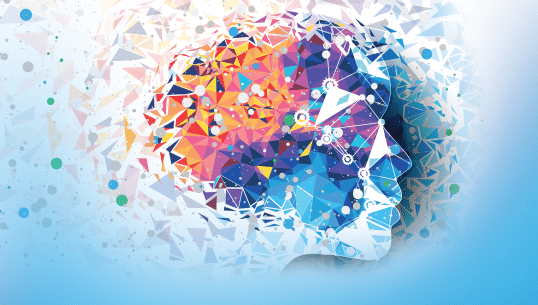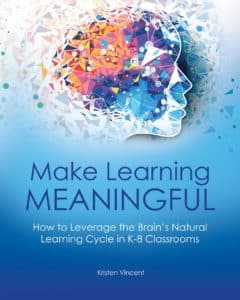
A new book from CRS Publishing, Make Learning Meaningful: How to Leverage the Brain’s Natural Learning Cycle in K–8 Classrooms, offers a brain-based approach to sustaining student engagement and provides examples of what the natural learning cycle looks and sounds like for teaching academics, discipline, and social-emotional skills in grades K–8. Below, author Kristen Vincent shares some excerpts from her book about why the natural learning cycle is an effective lesson framework for structuring learning opportunities for students.
The natural learning cycle is not a new strategy or practice in education. Your students have most likely been engaging in the natural learning cycle since birth. However, when children begin their formal schooling, usually around the age of five, the natural learning cycle is often replaced with other teacher-directed models of instruction. The result can diminish natural curiosity and exploration as students complete curriculum work assigned by an adult, with learning goals created by someone else.
Leveraging the natural learning cycle will breathe new life into rote lessons, help students understand the why and how of discipline, and allow students to practice and develop the skills needed to be an active participant in their own learning. When you understand how a student’s brain functions to learn new information and skills, you will naturally want to mirror that process.
In a school setting, the three phases of the natural learning cycle provide an excellent framework for teaching discipline and rule-following behaviors, social-emotional competencies, and academic concepts and skills:
This cycle is not always linear. Learners are constantly taking in data and making decisions and adjustments as they move through a natural learning cycle. Based on the success during a working phase or on their reflection, students will measure their accomplishment to affirm if a goal has been achieved. If not, they may move back through the natural learning cycle to reset a goal to make it more achievable, or they may make adjustments to the work in order to meet the goal. Or, after some time in the reflection phase, they may decide to put in additional work before reflecting again. It is a fluid process and can be individualized to each learner and their goals.

Visit the Responsive Classroom bookstore to preorder your copy of Make Learning Meaningful: How to Leverage the Brain’s Natural Learning Cycle in K–8 Classroom.
Kristen Vincent is the Assistant Director of Marketing for Center for Responsive Schools and has over 20 years of experience working in education. Kristen is also the coauthor of Closing Circles: 50 Activities for Ending the Day in a Positive Way and The Joyful Classroom: Practical Ways to Engage and Challenge Elementary Students.